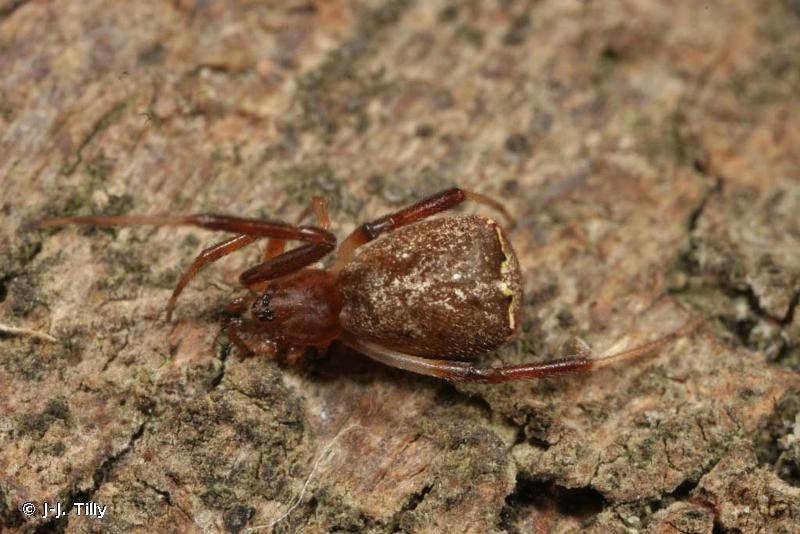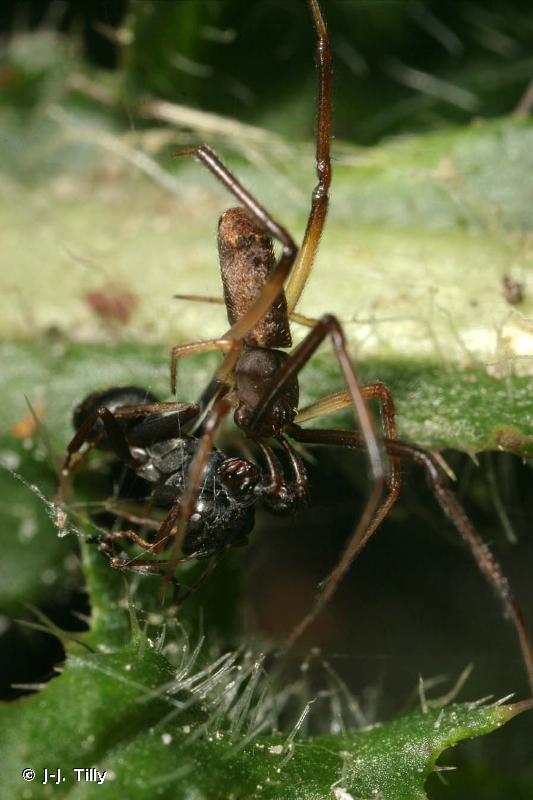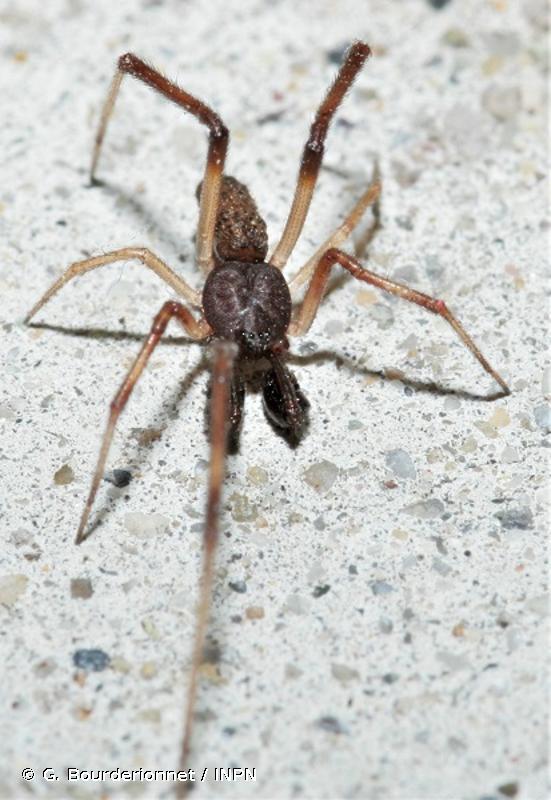
cd_nom

| Author : J-J. Tilly |
 |
To get the picture, please visit:
Jean-Jacques Tilly
Association française d'Arachnologie
http://asfra.fr/Site/Main_public.html
email : inpn@mnhn.fr
Any reuse of one or more photographs on this site is subject to an authorization request from the author.
Link to the Code of Intellectual Property (Legifrance)

| Author : J-J. Tilly |
 |
To get the picture, please visit:
Jean-Jacques Tilly
Association française d'Arachnologie
http://asfra.fr/Site/Main_public.html
email : inpn@mnhn.fr
Any reuse of one or more photographs on this site is subject to an authorization request from the author.
Link to the Code of Intellectual Property (Legifrance)

| Author : G. Bourderionnet / INPN |
 |
To get the picture, please visit:
Guy Bourderionnet
inpn@mnhn.fr
Legend: mâle
Despite the Creative Commons license, please inform the author of the use which will be made of his photo

| Author : J-J. Tilly |
 |
To get the picture, please visit:
Jean-Jacques Tilly
Association française d'Arachnologie
http://asfra.fr/Site/Main_public.html
email : inpn@mnhn.fr
Any reuse of one or more photographs on this site is subject to an authorization request from the author.
Link to the Code of Intellectual Property (Legifrance)

| Author : G. Bourderionnet / INPN |
 |
To get the picture, please visit:
Guy Bourderionnet
inpn@mnhn.fr
Legend: mâle
Despite the Creative Commons license, please inform the author of the use which will be made of his photo

| Author : G. Bourderionnet / INPN |
 |
To get the picture, please visit:
Guy Bourderionnet
inpn@mnhn.fr
Legend: mâle
Despite the Creative Commons license, please inform the author of the use which will be made of his photo
Distribution mondiale
Europe excepté au Nord
Caractères distinctifs, espèces
Taille - femelle : 4-6 mm, mâle : 4-5 mm.
Le genre est caractérisé par un abdomen tronqué formant un trapèze élargi à l'arrière. Les pattes III sont particulièrement courtes. La coloration du corps et des pattes permet de distinguer l'espèce avec ses pattes antérieures sombres des fémurs aux tibias. Il y a cinq espèces d'Episinus répertoriées de France.
Milieux colonisés
Episinus troncatus colonise la végétation basse de prairies, de landes, de lisières de forêts.
Chasse
L'espèce tisse, très près du sol, une toile particulièrement simple avec deux fils parallèles tendus verticalement, reliés entre eux par un fil transversal. Le bas des fils verticaux est collant sur quelques millimètres. L'araignée se tient avec les pattes posées sur les deux fils verticaux. Lorsqu'une proie se colle sur le fil et se défend pour se sauver, le fil se casse à sa base et la tension le fait se relever. La proie toujours collée au fil est alors soulevée et suspendue dans l'espace, devenant très vulnérable. L'araignée l'emmaillote alors puis la remonte pour s'en nourrir. Beaucoup des victimes sont des fourmis.
Développement, cycle
Les adultes sont observés d'avril à septembre, avec un maximum en juin-juillet. Le cycle semble annuel.
A. Canard(Université de Rennes/Service du Patrimoine Naturel, MNHN),2014
Continental
Metropolitan France
Overseas
Marine
Metropolitan France
Overseas
The map presents a summary at the 10 x 10 km grid of the observation data for the species transmitted to the SINP. These data have been subjected to validation filters.
The map presents a reference distribution layer of the species at the scale of departments and marine sectors. The presence and absence data were established by expertise within a network of partners. This reference distribution is used in the validation process of the SINP data at the INPN level.
Corresponds to a report on the basis of at least one observation proved within a period of 10 years (20 years for little-known invertebrates) preceding the year and no presumption of extinction since obtaining the last data nor doubt on reproductive and implemented nature of this population. For migratory species, the presence indicated concerns areas of reproduction.
This status is based on one or more of the following criteria:
This point covers the absence, more difficult by nature to demonstrate than presence. This status is based on one or more of the following criteria:
This status must be assigned to a department in which the presence of the species is casual.
Particular case of absence due to a proven extinction less than a half century ago (older disappearances are treated as "no probable or definite").
In the state of knowledge, we can not comment on the presence or absence in the current department. This is the default status when not comprised in one of the previous categories or whenever there is doubt.
The map shows the global distribution of the species based on GBIF data (Global Biodiversity Information Facility).
